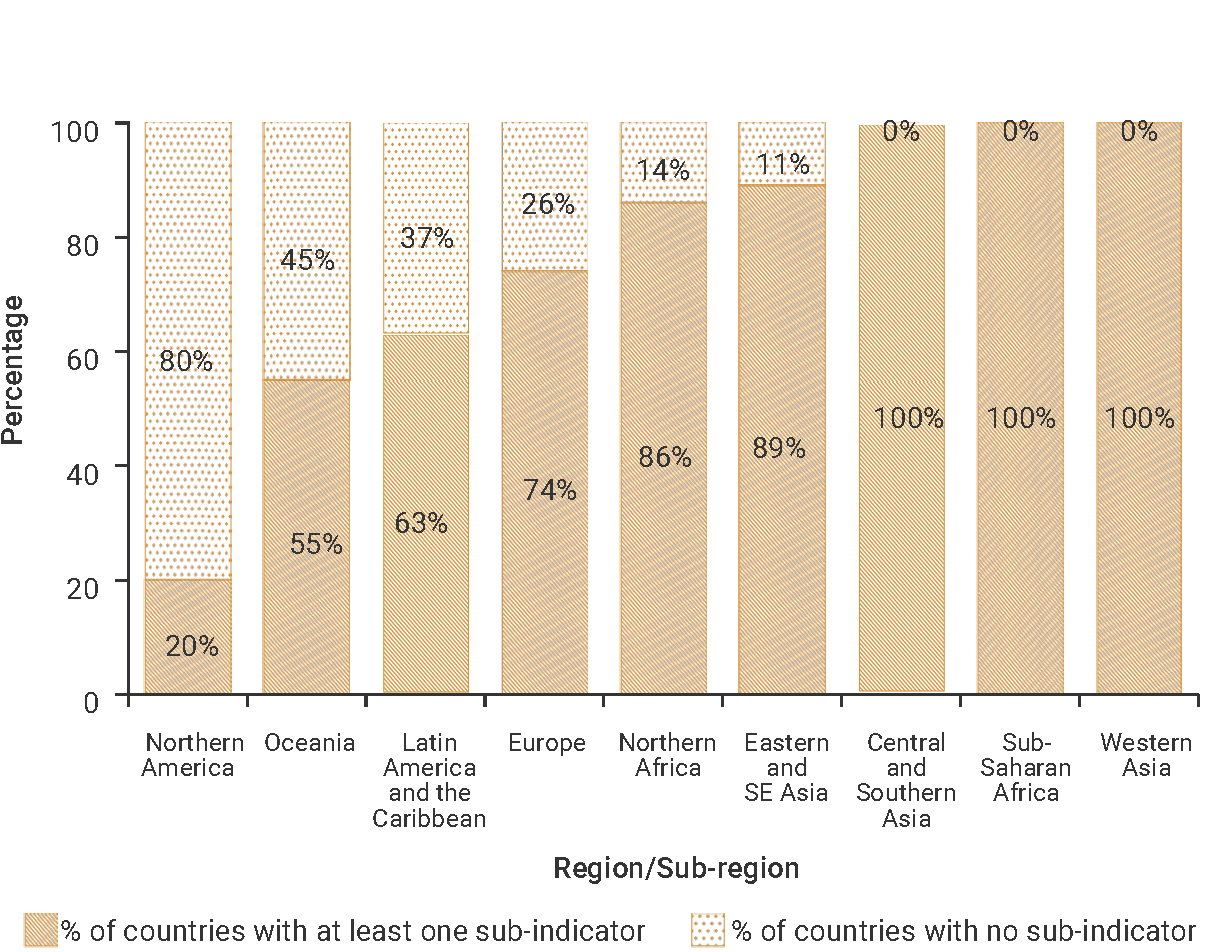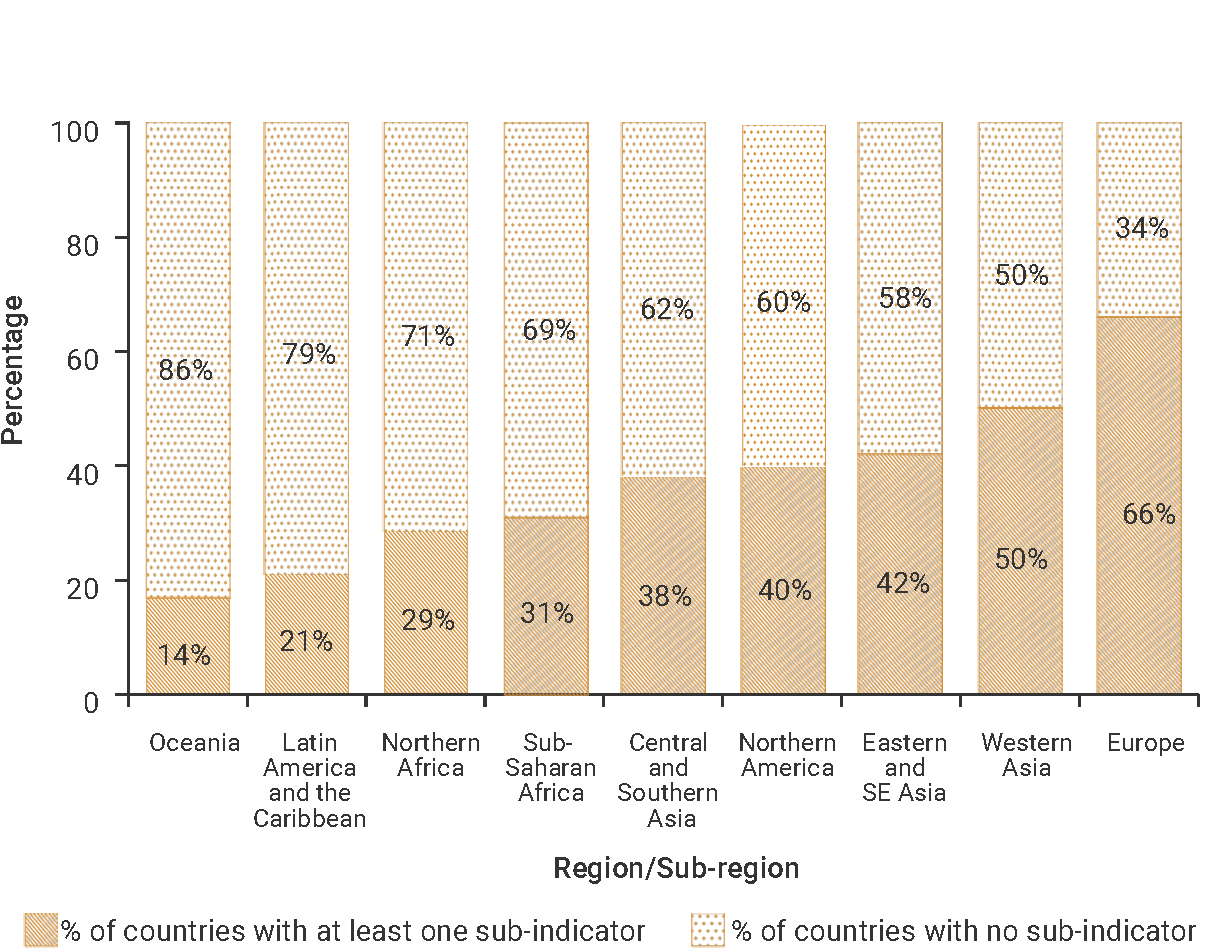Indicator 15.9.1(a) Number of countries that have established national targets in accordance with or similar to Kunming-Montreal Global Biodiversity Framework Target 14 in their national biodiversity strategy and action plans and the progress reported towards these targets and (b) integration of biodiversity into national accounting and reporting systems, defined as implementation of the System of Environmental-Economic Accounting
1. Key features and metadata
Definition: Until 2022,this indicator measures progress towards national targets established in accordance with Aichi Biodiversity Target 2 (ABT 2) of the Strategic Plan for Biodiversity 2011-2020. From 2023 onwards, the indicator will measure the progress towards national targets established in accordance with the Kunming-Montreal Global Biodiversity Framework Target 14.
| Sub-indicator | Disaggregated by |
|---|---|
|
ER_BDY_ABT2NP Countries that established national targets in accordance with Aichi Biodiversity Target 2 (ABT2) of the Strategic Plan for Biodiversity 2011-2020 in their National Biodiversity Strategy and Action Plans (1 = YES; 0 = NO)[1] |
Level/Status
|
|
ER_BDY_SEEA Countries with integrated biodiversity values into national accounting and reporting systems, defined as implementation of the System of Environmental-Economic Accounting (1 = YES; 0 = NO) |
Sources of information: Ministries of Environment (or similar), National Statistical Offices and other relevant agencies (through NBSAPs and National Reports), and the Global Assessments of Environmental-Economic Accounting and Supporting Statistics.
Related SDG Indicators: 15.a.1 and 15.b.1((a) Official development assistance on conservation and sustainable use of biodiversity and (b) revenue generated and finance mobilized from biodiversity-relevant economic instruments).
[1]SDG 15.9.1a has been approved by the IAEG-SDG to cover the Kunming-Montreal Global Biodiversity Framework Target 14. As of data reported for the year 2023, a new sub-indicator will be used entitled “Countries that established national targets in accordance with Kunming-Montreal Global Biodiversity Framework Target 14”.
2. Data availability by region, SDG Global Database, as of 02 July 2025


3. Proposed disaggregation, links to policymaking and its impact
| Proposed disaggregation | Link to policymaking | Impact |
|---|---|---|
|
Types of biodiversity integration into policy frameworks:
Applies to:
|
This disaggregation highlights which policy framework concerns the biodiversity mainstreaming process under the Strategic Plan for Biodiversity 2011-2020 (CBD 2020). The Kunming-Montreal Global Biodiversity Framework (GBF), adopted in December 2022, will reinforce and extend the mainstreaming obligations of Parties, notably with the “full integration” of biodiversity and its values in policies and regulations and other planning frameworks, specifically Target 14: Integrate Biodiversity in Decision-Making at Every Level (CBD 2022). |
Biodiversity mainstreaming should occur at all levels of government and across sectors in accordance with the specific context and capacities of Parties. Biodiversity mainstreaming means that biodiversity values, considerations and opportunities are duly taken into account in all decision-making processes across government interventions and economic sectors, especially those outside the scope of a dedicated biodiversity policy. This would benefit populations that are dependent on biodiversity for their livelihoods (e.g. sustainable forest or agriculture management), create macro-economic policy frameworks to address poverty reduction and identify cross-cutting interventions (e.g. recognizing the role of traditional knowledge and customary uses in the sustainable management of ecosystems) (CBD 2016). Mainstreaming at the national level can follow different pathways. These include embedding biodiversity into macroeconomic policy frameworks (e.g. budget and poverty reduction strategies), cross-cutting interventions (e.g. recognizing the role of traditional knowledge and customary uses in the sustainable management of ecosystems) or sector-specific mainstreaming (e.g. sustainable forest or agriculture management) (CBD 2016). |
|
Development of the System for Environmental-Economic Accounting: Central Framework and Ecosystem Accounting (SEEA-CF and SEEA-EA)
|
This disaggregation is aimed attracking the practical implementation of SEEA-CF and SEEA-EA. While the SEEA-EA accounts listed are probably some of the most relevant, SEEA-CF accounts are also relevant as they provide information on drivers of biodiversity loss/degradation (such as taxes and subsidies or environmental protection expenditures). This would assist in estimating the level of integration of biodiversity and ecosystem values in national accounting systems and thus in macroeconomic data and indicators that are still the most frequently used by policymakers.This disaggregation, which makes nature’s value more visible and better reflected in decision-making tools, is in line with Target 14 of the Global Biodiversity Framework: Integrate Biodiversity in Decision-Making at Every Level (CBD 2022). |
The SEEA-EA produces useful information on ecosystem extent, ecosystem characteristics and ecosystem services (both in biophysical and monetary units) as well on the evolution of ecosystem assets. It can be used to assess the health of ecosystems and the state of natural capital, the flow of ecosystem services and their use through human activities. The SEEA-CF provides information on policy responses that impact biodiversity, such as environmental protection expenditures and environmental taxes and subsidies. This data is also key for mainstreaming biodiversity values into conventional macroeconomic statistics and national accounts. This provides the opportunity for biodiversity values to be recognized in national budgets, economic planning and fiscal policies. They can be used as well for other ‘operational’ policies or interventions at national and local levels, such as land use planning, the payment of ecosystem services, environmental compensations, or expansion of protected areas. |

